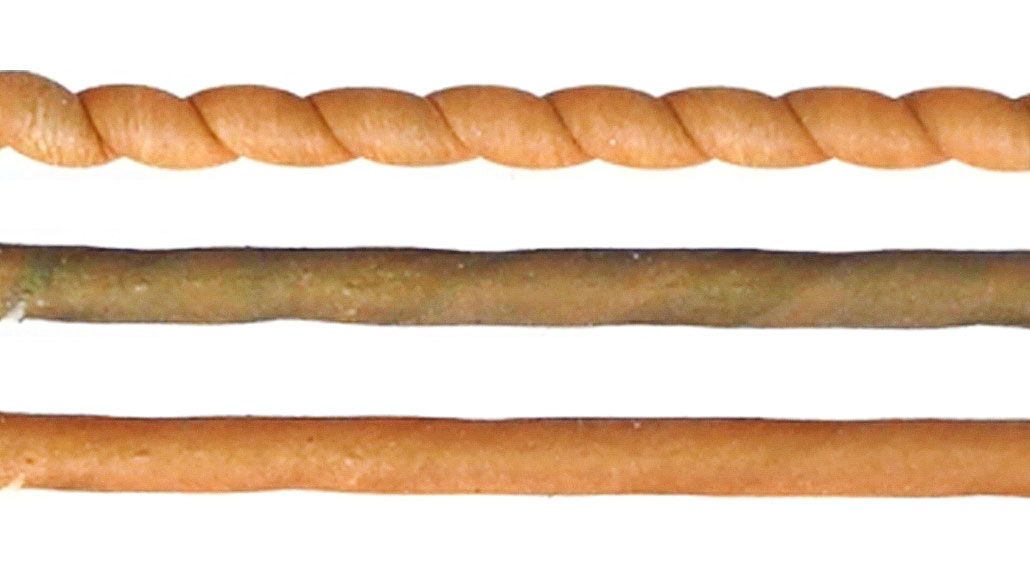A new cooling technique relies on untwisting coiled fibers
Twistocaloric cooling is an alternative to standard chilling methods

Twisted fibers could be used to cool off, scientists report. Here, a fiber of rubber has been coated with paint whose color reveals its temperature. A coiled fiber at room temperature (orange, top) cools when untwisted (brown, middle) before returning to room temperature over time (bottom).
University of Texas at Dallas







